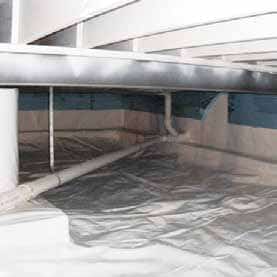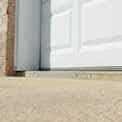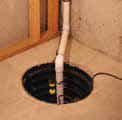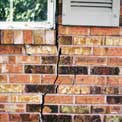The Homeowner’s Guide to Seasonal Home Maintenance
Prevent costly repairs by following the tips and tricks in this guide.

Preventative Foundation Repair Measures
As a homeowner, your home is your most valuable asset. Whether it’s a 2 bedroom/1 bathroom cottage or a large McMansion in suburban America, a healthy percentage of your net worth is likely tied up in your house. Additionally, your family depends on your home for comfort, safety, and security. With that being said, it’s your responsibility to ensure your home is properly cared for and maintained all year round.
Your ability to effectively maintain your home is largely dependent on how early you can identify issues and problem areas.
Early identification is an important step in fixing these issues, whether it’s a:



In most cases, the earlier you identify a problem, the less expensive and time-consuming it is to alleviate the issue. This is especially true when it comes to your home’s foundation. This guide will serve as your plan for regular home maintenance – particularly as it relates to foundation issues, concrete settlement, and structural repair. Feel free to print this guide, save it on your tablet, or bookmark it in your internet browser. It is intended to be used all-year-round and will help you ensure your home is healthy and protected through every month and season.
In this guide, we will discuss and include the following:
- Home Stability and how and when you should check for issues.
- Basic Types of Home Foundations (basement, crawlspace, and slab) and important considerations to keep in mind.
- Home Maintenance Checklist that you can use when physically examining your home for signs of foundational settlement or movement.
And finally, advice on what to do when you encounter a problem.
While it is impossible to mention every detail and home-specific problem, for more information on a specific section or piece of advice, please don’t hesitate to reach out and contact a local professional such as Helitech.
Factors Contributing to Home Stability
The problem with home stability and foundations is that no two situations are the same. Every home responds differently to internal and external elements, and you can only understand how your home reacts by keeping a close eye on potential issues. However, there are some general causes and contributing factors that heighten the threat of a compromised, weakened, or settled foundation. Let’s take a look.
Age of the Home
 In some cases, the age of your home can be a contributing factor. In general, the older a home is, the greater the potential for foundation settlement and the greater risk it has of becoming structurally compromised. If your home is older than 10 years, you should always be alert to the possibility of structural issues. Now, that’s not to say you will have any. Homes can last for decades and even centuries without issue. However, as is the case with anything, deterioration comes with age.
In some cases, the age of your home can be a contributing factor. In general, the older a home is, the greater the potential for foundation settlement and the greater risk it has of becoming structurally compromised. If your home is older than 10 years, you should always be alert to the possibility of structural issues. Now, that’s not to say you will have any. Homes can last for decades and even centuries without issue. However, as is the case with anything, deterioration comes with age.
Climate Conditions
 Another major contributing factor to your home’s stability is the climate. When climate conditions change, they can have a profound effect on your home foundation’s integrity. As temperatures drop and it gets colder, the soil expands. Then, as the weather begins to warm and the soil dries, the ground around your foundation shrinks. As a result, drastic temperature shifts (or even normal seasonal changes) can lead to ground motion – which may affect the foundation.
Another major contributing factor to your home’s stability is the climate. When climate conditions change, they can have a profound effect on your home foundation’s integrity. As temperatures drop and it gets colder, the soil expands. Then, as the weather begins to warm and the soil dries, the ground around your foundation shrinks. As a result, drastic temperature shifts (or even normal seasonal changes) can lead to ground motion – which may affect the foundation.
Soil Conditions
 Other soil conditions can come into play, as well. From its composition to the amount of moisture held within, soil quality often determines the stability of a foundation. Soils with high clay content are typically at greater risk of foundation movement, while soils with low clay content are the least affected. As far as moisture is concerned, water is the primary culprit in many situations. Excess moisture can saturate the soil which causes it to weaken and expand while dehydrated soil tends to contract, crack, and compress or shrink.
Other soil conditions can come into play, as well. From its composition to the amount of moisture held within, soil quality often determines the stability of a foundation. Soils with high clay content are typically at greater risk of foundation movement, while soils with low clay content are the least affected. As far as moisture is concerned, water is the primary culprit in many situations. Excess moisture can saturate the soil which causes it to weaken and expand while dehydrated soil tends to contract, crack, and compress or shrink.
Surrounding Landscape
 Maintaining the proper moisture content is important. However, maturing bushes, trees, and vegetation surrounding a home can also cause issues. As they mature, their demand for water increases and the roots begin to pull moisture from the soil beneath the home’s foundation. When homeowners report foundation problems decades later, it sometimes directly coincides with the growth and size of surrounding plants.
Maintaining the proper moisture content is important. However, maturing bushes, trees, and vegetation surrounding a home can also cause issues. As they mature, their demand for water increases and the roots begin to pull moisture from the soil beneath the home’s foundation. When homeowners report foundation problems decades later, it sometimes directly coincides with the growth and size of surrounding plants.
Types of Home Foundations

Homes with a Basement
 Each type of home construction has its own pros and cons; Houses with basements are no different. Depending on where you live, basements may or may not be popular. For example, basements are rather rare in Florida because the water table depth is too close to the surface. However, in the northeast United States and other geographical areas where acreage is expensive, basements are used to increase square footage when space is at a premium. Here in the Midwest, basements are commonly used as an extra living space or storage, and come in handy for protection during tornado season.
Each type of home construction has its own pros and cons; Houses with basements are no different. Depending on where you live, basements may or may not be popular. For example, basements are rather rare in Florida because the water table depth is too close to the surface. However, in the northeast United States and other geographical areas where acreage is expensive, basements are used to increase square footage when space is at a premium. Here in the Midwest, basements are commonly used as an extra living space or storage, and come in handy for protection during tornado season.
Common home designs and styles that have basements are colonial, victorian, split level, some ranch designs, and some townhomes. However, depending on local codes, soil conditions, and preferences, any style could realistically include a basement.
Because of their proximity to the soil and direct relationship with the foundation, basements are prone to numerous problems. As a homeowner with a basement, it’s important you stay on top of home maintenance issues throughout the year and check for issues such as:





As far as regular maintenance tasks go, you shouldn’t forget to regularly:
- Check for leaks
- Fix any cracks in walls or floors
- Test your sump pump and backup pump (or install a backup if you don’t have one)
- Testing your sump pump is as easy as dumping a 2-gallon bucket of water into the sump pit to ensure the pump is able to remove the water and pump it through the discharge line.
Homes with a Crawl Space
For homes without basements, crawl spaces are a good compromise. Typical home designs with crawl spaces include ranch, colonial, and some split levels. Crawl spaces are widely used throughout the United States, but they don’t work as well in humid areas. However, some crawl spaces use vents to combat trapped moisture and improve airflow.
Depending on whether you have a vented or closed crawl space, there are a number of issues to be on the lookout for and maintenance tips to keep in mind. These include:


Homes Built on a Concrete Slab

Concrete slab homes are a good option to turn to when there is a high water table present or shallow rock in the region that limits the ability for basement construction. Although slab construction is typically more economical than basement construction, slab foundations aren’t without their flaws.
One major fallback to slab foundations is that they are constructed in the active soil zone, which is affected the most from seasonal wetting and drying.
As is the case with any foundation, it all depends on soil and climate conditions. Slab homes require very little site preparation and work well on level properties. Slab foundations are widely used with Sunbelt, beach or coastal, Florida style, and adobe-style house plans. Slab homes are not as common in the Midwest but are still present.
In general, slab-foundation homes experience the best results in warm climates. In the north where the ground freezes in the winter, slabs have a tendency to shift (or at the very least cause cold floors). While they are more simple and economical to construct, the major downside is a home built on a slab doesn’t get the added benefit of extra storage space.

While there isn’t significant maintenance with a slab foundation, there are still some steps you can take for upkeep:
- You will want to keep an eye on roof water runoff, foundation drainage, and other irrigation problems that appear to be having an effect on your foundation.
- In areas with drastic weather patterns, you may find value in watering your foundation to stop seasonal foundation damage.

Annual Checklist
Each year, set aside one day to perform your yearly home maintenance check. Ideally, this should be when the temperature is comfortable (between 60 and 80 degrees) and no extreme weather conditions are present.
Foundation Settlement/Movement
Interior Walls
Doors and Windows
- Check window and door trim for rotted wood
- Check/replace window screens
- Check for gaps around door frames or doors that stick
- Check for cracks by window/door frames
Floors
- Check for settled or slanting floors
- Check for evenness and damage, especially where floor material joins another
- Evaluate for refinishing or replacement



Ceilings and Roof
- Check the roof for leaks and evaluate for future replacement
Basements
- Look for signs of termites or wood decay
- Look for water stains and damage
Exterior
- Check for separation between a sidewalk and home
- Check for cracks in brick or masonry exterior
- Check for separation between entrance steps/patios and home
- Check porch or patio for separation between the home and posts
- Check driveways and walks for cracks and separation
- Clean drains, window sills, and gutters
- Check closeness of trees to foundation for issues caused by roots
- Check between the chimney and home for separation or cracks



Safety Inspection
- Check/Clean HVAC filters
- Check batteries in smoke and carbon monoxide detectors
- Check garage door auto-reverse function
- Check fire extinguishers
- Clean range hood filters
- Clean kitchen sink disposal
- Check the condition of cords and extension cords for major appliances
- Run water in unused areas, such as guest bathrooms
- Test water heater pressure relief valve
In addition to this checklist to be performed once a year, be sure to check the following additional checklists in preparation for seasonal and climate changes throughout the year.

Winter Checklist
- Regularly check for and remove icicles and ice dams
- Test your electrical/outlets
- Inspect your basement for mold or cracks
- Check the bathroom caulking
- Close crawl space vents
- Caulk exterior windows and door casings
- Apply new weather stripping on exterior doors
- Disconnect exterior water hoses
- Test sump pump before spring hits



Spring Checklist
- Check exterior drainage around the foundation – everything should slope away from the home
- Clean gutters and make sure they are extended at least 6 ft
- Check for exterior cracks
- Prepare your air conditioning system for the summer
- Check trees for interference with electrical lines
- Inspect the roof for damage and leaks
- Check/Replace window screens
- Clear away any dead plants
- Check weather stripping
- Check caulking at doors and windows
- Check exterior paint
- Check siding and trim for decay or wind damage



Summer Checklist
- Inspect plumbing and faucets for leaks
- Check for insect problems
- Make any necessary deck repairs and inspect handrails
- Clean debris from windows
- Check and clean exhaust vents to the exterior of the home
- Check the grout in bathrooms, kitchen, etc.
- Open crawl space vents

Fall Checklist
- Winterize air conditioning system
- Flush hot water heater
- Prepare heating system for winter
- Check driveway and pavement for cracks and separation, reseal if needed
- Check soil conditions around your foundation after a dry, hot summer. The separation between the two can affect the stability of your foundation. If extremely dry, try watering around the foundation to increase the moisture level.
- Get the chimney cleaned and inspected for cracks
- Check the insulation in attic and crawl space and make sure they meet minimum thickness
- Test water heater’s pressure relief valve
- Remove window air conditioning units
- Winterize yard irrigation system to prevent freezing



What to Do if You Encounter a Foundation Problem
While much of the maintenance checklist is designed for peace of mind and caution, you will inevitably come across issues each time you perform a thorough check. How you respond to problems is just as important as discovering that the issue exists.
 Fix the problem yourself. For small problems or for tasks that you have experience or expertise addressing, you can handle them right away.
Fix the problem yourself. For small problems or for tasks that you have experience or expertise addressing, you can handle them right away.
 Document the problem. If it’s an issue like a crack in a wall or foundation, you should document the issue by taking pictures. You can then compare changes in the size, growth, and so on overtime to see if the problem is getting worse. Use a ruler or tape measure in the photo to help determine size and growth, and try to take the picture from the same angle each time.
Document the problem. If it’s an issue like a crack in a wall or foundation, you should document the issue by taking pictures. You can then compare changes in the size, growth, and so on overtime to see if the problem is getting worse. Use a ruler or tape measure in the photo to help determine size and growth, and try to take the picture from the same angle each time.
 Call the professionals. When a problem appears to be serious, it’s best to call the professionals in to take a look. Certain issues, such as problems with a foundation, require experience and training to handle. And when it comes to your investment, you don’t want to risk taking shortcuts or avoiding problems. Reputable companies, such as Helitech, will take a look at the problem for free, tell you if you can fix the problem yourself, assist in monitoring the problem to see if it persists, and provide a written estimate if repairs are needed. Always check with your local BBB or Home Builder’s Association when hiring a contractor.
Call the professionals. When a problem appears to be serious, it’s best to call the professionals in to take a look. Certain issues, such as problems with a foundation, require experience and training to handle. And when it comes to your investment, you don’t want to risk taking shortcuts or avoiding problems. Reputable companies, such as Helitech, will take a look at the problem for free, tell you if you can fix the problem yourself, assist in monitoring the problem to see if it persists, and provide a written estimate if repairs are needed. Always check with your local BBB or Home Builder’s Association when hiring a contractor.
Get a Free Estimate for Repair
If you ever find an issue with your home’s foundation – whether your house is built on a basement, crawlspace, or slab – don’t hesitate to give Helitech a call at 800-246-9721. We would be happy to provide you with a free repair estimate and answer any questions you may have. We have been in business for over 5 decades and stay up to date with the latest developments and technologies every step of the way!
5 star(s)
Ken S.
Petersburg, IL, USA
Adam Fricke was very helpful and explained everything Helitech can do and even helped me with my change orders. Chad Hurd and crew did a fantastic job. He explained everything they were doing. All the guys on the crew were helpful, friendly and answered any questions I had. They did a lot of heavy work and in a very short time, I was very impressed with how well they worked together. They know their stuff. I highly recommend Helitech for any basement waterproofing needs you may have. You won’t be disappointed.
Read More Reviews






 Each type of home construction has its own pros and cons; Houses with basements are no different. Depending on where you live, basements may or may not be popular. For example, basements are rather rare in Florida because the water table depth is too close to the surface. However, in the northeast United States and other geographical areas where acreage is expensive, basements are used to increase square footage when space is at a premium. Here in the Midwest, basements are commonly used as an extra living space or storage, and come in handy for protection during tornado season.
Each type of home construction has its own pros and cons; Houses with basements are no different. Depending on where you live, basements may or may not be popular. For example, basements are rather rare in Florida because the water table depth is too close to the surface. However, in the northeast United States and other geographical areas where acreage is expensive, basements are used to increase square footage when space is at a premium. Here in the Midwest, basements are commonly used as an extra living space or storage, and come in handy for protection during tornado season.

























